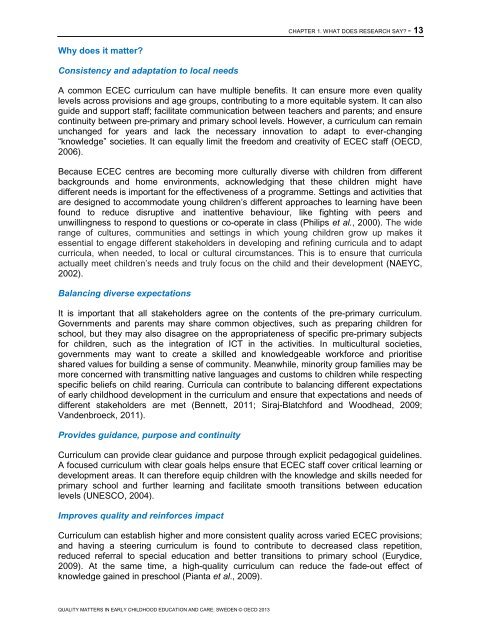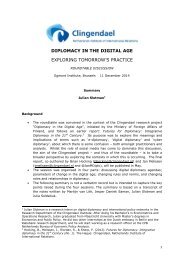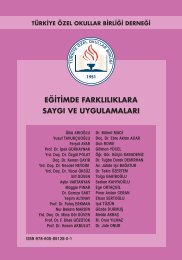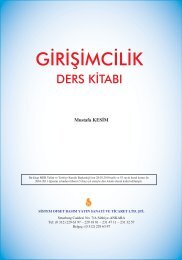SWEDEN%20policy%20profile%20-%20published%2005-02-2013
SWEDEN%20policy%20profile%20-%20published%2005-02-2013
SWEDEN%20policy%20profile%20-%20published%2005-02-2013
Create successful ePaper yourself
Turn your PDF publications into a flip-book with our unique Google optimized e-Paper software.
Why does it matter?<br />
Consistency and adaptation to local needs<br />
QUALITY MATTERS IN EARLY CHILDHOOD EDUCATION AND CARE: SWEDEN © OECD <strong>2013</strong><br />
CHAPTER 1. WHAT DOES RESEARCH SAY? - 13<br />
A common ECEC curriculum can have multiple benefits. It can ensure more even quality<br />
levels across provisions and age groups, contributing to a more equitable system. It can also<br />
guide and support staff; facilitate communication between teachers and parents; and ensure<br />
continuity between pre-primary and primary school levels. However, a curriculum can remain<br />
unchanged for years and lack the necessary innovation to adapt to ever-changing<br />
“knowledge” societies. It can equally limit the freedom and creativity of ECEC staff (OECD,<br />
2006).<br />
Because ECEC centres are becoming more culturally diverse with children from different<br />
backgrounds and home environments, acknowledging that these children might have<br />
different needs is important for the effectiveness of a programme. Settings and activities that<br />
are designed to accommodate young children’s different approaches to learning have been<br />
found to reduce disruptive and inattentive behaviour, like fighting with peers and<br />
unwillingness to respond to questions or co-operate in class (Philips et al., 2000). The wide<br />
range of cultures, communities and settings in which young children grow up makes it<br />
essential to engage different stakeholders in developing and refining curricula and to adapt<br />
curricula, when needed, to local or cultural circumstances. This is to ensure that curricula<br />
actually meet children’s needs and truly focus on the child and their development (NAEYC,<br />
20<strong>02</strong>).<br />
Balancing diverse expectations<br />
It is important that all stakeholders agree on the contents of the pre-primary curriculum.<br />
Governments and parents may share common objectives, such as preparing children for<br />
school, but they may also disagree on the appropriateness of specific pre-primary subjects<br />
for children, such as the integration of ICT in the activities. In multicultural societies,<br />
governments may want to create a skilled and knowledgeable workforce and prioritise<br />
shared values for building a sense of community. Meanwhile, minority group families may be<br />
more concerned with transmitting native languages and customs to children while respecting<br />
specific beliefs on child rearing. Curricula can contribute to balancing different expectations<br />
of early childhood development in the curriculum and ensure that expectations and needs of<br />
different stakeholders are met (Bennett, 2011; Siraj-Blatchford and Woodhead, 2009;<br />
Vandenbroeck, 2011).<br />
Provides guidance, purpose and continuity<br />
Curriculum can provide clear guidance and purpose through explicit pedagogical guidelines.<br />
A focused curriculum with clear goals helps ensure that ECEC staff cover critical learning or<br />
development areas. It can therefore equip children with the knowledge and skills needed for<br />
primary school and further learning and facilitate smooth transitions between education<br />
levels (UNESCO, 2004).<br />
Improves quality and reinforces impact<br />
Curriculum can establish higher and more consistent quality across varied ECEC provisions;<br />
and having a steering curriculum is found to contribute to decreased class repetition,<br />
reduced referral to special education and better transitions to primary school (Eurydice,<br />
2009). At the same time, a high-quality curriculum can reduce the fade-out effect of<br />
knowledge gained in preschool (Pianta et al., 2009).








